The 7 Modes in Music
Modes are a set of scales that differ from the traditional ‘major’ and ‘minor’ scales used in Western music. Each mode has a unique set of intervals and creates a particular mood or feeling in a composition.
This article introduces you to the 7 main modes used in Western music, and explains why you totally should be using them!
| Mode | Step Pattern | Main Characteristics | Example Track |
|---|---|---|---|
| Ionian | W-W-H-W-W-W-H | Major 3rd, Major 7th | Bob Marley - Stir It Up |
| Dorian | W-H-W-W-W-H-W | Minor 3rd, Major 6th, relationship between the 5th, 6th and minor 7th | Tears for Fears - Mad World |
| Phrygian | H-W-W-W-H-W-W | Minor 2nd, Minor 7th | Metallica - Wherever I May Roam |
| Lydian | W-W-W-H-W-W-H | Major 3rd, Augmented 4th | The Simpsons Main Theme |
| Mixolydian | W-W-H-W-W-H-W | Major 3rd, Minor 7th | Guns N Roses - Sweet Child O Mine |
| Aeolian | W-H-W-W-H-W-W | Minor 3rd, Minor 6th, Minor 7th | R.E.M - Losing my Religion |
| Locrian | H-W-W-H-W-W-W | Minor 2nd, Minor 3rd, Augmented 5th, Minor 6th, Minor 7th | Bjork - Army of me |
Tab 1: The seven modes in music with their respective note interval pattern, harmonic characteristics and an example from popular music.
History of Modes
Modes were used in music long before scales joined the party. They were the foundation of Gregorian chant music, also known as 'Gregorian Modes', during the medieval period.
However, the modes originated in Greece long before this - hence the Greek names ("Dorian", "Phrygian", etc.).
Gregorian chants were monophonic – a single melodic line without any accompaniment, so the flavor of each mode depended on the intervals between each note. Modes are typically more rigid than major and minor scales, which can be interchanged for harmonic variation.
Each mode has its distinct sound based on the notes used in the scale and melody rather than the bass, chords or accompaniment. That’s why you rarely stray away from the notes within the mode.
Types of Modes
The major scale often sounds ‘happy’, while the minor scale is referred to as ‘sad’. The modes sit somewhere in between, with some having characteristics of both major and minor scales.
Each mode is a scale composed of a unique whole-step and half-step pattern. These pattern variations give modes their distinct sound.
You can easily figure out the pattern of each mode using the C major scale: If you play the C major scale but start and end on a different note each time, you’ll get a unique pattern of whole and half steps, and, therefore, a different mode.
By using the C major scale, you can understand the unique sound and pattern of each mode without having to memorize each one individually. C major acts as the perfect reference because no black keys are involved.
Ionian
| Step pattern | Main characteristics | Example track |
| W-W-H-W-W-W-H | Major 3rd, Major 7th | Bob Marley - Stir It Up |
Ionian is very similar to a major scale. The intervals between each note are identical: W-W-H-W-W-W-H.
But what sets the Ionian mode and the major scale apart is context. The major scale can move between other keys, allowing for notes outside of the home key to be played.
On the other hand, the Ionian mode does not stray from its own scale, which limits the notes that can be played. This limitation is what gives each mode its unique sound.
C Ionian starting on C
Dorian
| Step pattern | Main characteristics | Example track |
| W-H-W-W-W-H-W | Minor 3rd , Major 6th, relationship between the 5th, 6th and minor 7th | Tears for Fears - Mad World |
Dorian is a fascinating mode that shares characteristics of both minor and major scales.
With its interval pattern W-H-W-W-W-H-W, Dorian has a melancholic yet hopeful and mystical quality.
One defining characteristic of Dorian is the major 6th, which gives the scale its distinct sound.
As you ascend the scale, the major 6th lightens the mood, providing a sense of optimism. Conversely, as you descend the scale, the minor 3rd creates a more sorrowful and melancholic feeling.
D Dorian starting on D
Phrygian
| Step pattern | Main characteristics | Example track |
| H-W-W-W-H-W-W | Minor 2nd, Minor 7th | Metallica - Wherever I May Roam (Main Riff) |
Phrygian is built with a step pattern of H-W-W-W-H-W-W. It has a dark, mysterious feel to it, and a non-western quality due to its use of the minor 2nd (F in the above example). The minor 2nd can really accentuate the return back to the home key, sounding menacing as it does so.
The Phrygian mode is frequently used in metal music because of its intense and aggressive sound.
Phrygian has a variation called ‘Phrygian dominant’ that replaces the minor 3rd with a major 3rd (G# instead of F in the above example). This twist accentuates the minor 2nd even further, and adds a triumphant flavor to the already menacing tone.
E Phrygian starting on E
Lydian
| Step pattern | Main characteristics | Example track |
| W-W-W-H-W-W-H | Major 3rd, Augmented 4th | The Simpsons Main Theme (Melody) |
The Lydian mode consists of the step pattern W-W-W-H-W-W-H.
Lydian has a similar feel to the major scale, but uses an augmented 4th (B in above example) instead of a perfect 4th (Bb). This augmented 4th can feel strange and dissonant when played alone, but it adds a unique quality to the music when played in context.
Lydian feels like an ‘intensely major version’ of a major scale, adding magic and wonder to the sound. It can also give a comedic, ‘whacky’ color, as heard in the main theme for The Simpsons.
F Lydian starting on F
Mixolydian
| Step pattern | Main characteristics | Example track |
| W-W-H-W-W-H-W | Major 3rd, Minor 7th | Guns N Roses - Sweet Child O Mine |
The Mixolydian mode has the interval pattern W-W-H-W-W-H-W.
Mixolydian is also very similar to the major scale, but there is a minor 7th (F in the above example) instead of a Major 7th (F#). This simple change opens up a new palette of chords that can be used in conjunction with the scale; particularly the 7th chord (F major in the above example).
The flattened 7th in the Mixolydian mode can give it a slightly blues-y or folk-like quality.
G Mixolydian starting on G
Aeolian
| Step pattern | Main characteristics | Example track |
| W-H-W-W-H-W-W | Minor 3rd, Minor 6th, Minor 7th | R.E.M - Losing my Religion |
The Aeolian mode has the same interval pattern as the natural minor scale: W-H-W-W-H-W-W.
It has a sad, melancholic and somewhat dry sound, but the strong sense of connection between each note allows for some beautiful music writing.
Composers often use the minor 7th in this scale for a satisfying resolution back to the home key.
A Aeolian starting on A
Locrian
| Step pattern | Main characteristics | Example track |
| H-W-W-H-W-W-W | Minor 2nd, Minor 3rd, Augmented 5th, Minor 6th, Minor 7th | Bjork - Army of me (Verses only) |
Locrian is an unusual and less commonly used mode.
It's built with the interval pattern H-W-W-H-W-W-W and can have a dreamy, but also eerie and disjointed feel to it.
Its diminished 5th (F in the above example) gives Locrian a somewhat unresolved feel in its home key. It lacks a perfect 5th, which adds to the dissonance. Therefore, Locrian is rarely used in pop music.
With some creativity, however, composers can creatively use the Locrian to achieve unique and original sounds.
B Locrian starting on B
Mnemonic
You can memorize the musical modes and their order by using the following mnemonic:
“I Don’t Particularly Like Modes Anyways, Lol”.
The first letter from each word points to the seven musical modes in their corresponding order:
Ionian, Dorian, Phrygian, Lydian, Mixolydian, Aeolian and Locrian.
You can play each mode immediately by using only white keys from the right starting position:
The first mode ("Ionian") plays all white notes starting from C, the second ("Dorian") all white keys from D, Phrygian from E, all the way up the C major scale (CDEFGAB).
Applying modes in improvisation
Now that you’ve learnt about each mode and its characteristics, how do you apply these modes to your music?
Here’s a good starting point:
- Pick a mode you particularly like
- Play the home key in the bass as a drone, e.g. if you’re playing Dorian in D, play a low D note or find a drone video on Youtube
- Improvise the notes of the mode over the drone. Start off by ascending and descending the mode, always relating back to the home key as you do.
- Look at the main characteristics of each mode (refer to the tables in this article), and play with them. Experiment with different melodic phrases and rhythms. This will really help you understand the palette of each mode.
- Once you’ve got a good feel for the mode, you can start to experiment with modal chord progressions!
Once you have become familiar with a mode and its interval pattern, try transposing it into a different key. It will help solidify the sound of the mode in your head, and can lead to new creative possibilities. Sometimes we hear something so frequently, it begins to become too familiar, and we get too comfortable.
Transposing gives you a fresh perspective!
Learn more
Using modes in your compositions unlocks entire worlds of sounds. Pick your mode and learn about it now!
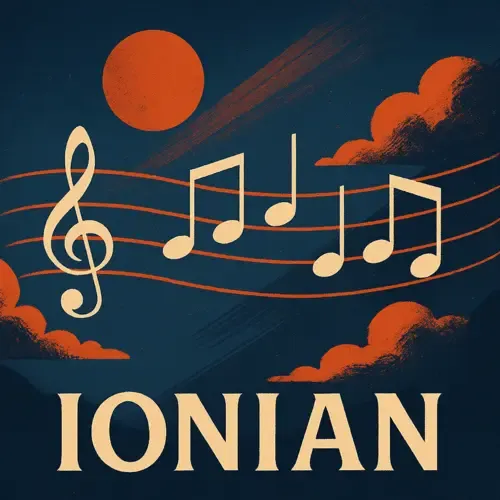
Ionian
Bright like the clear sky on a sunny day. Read article.
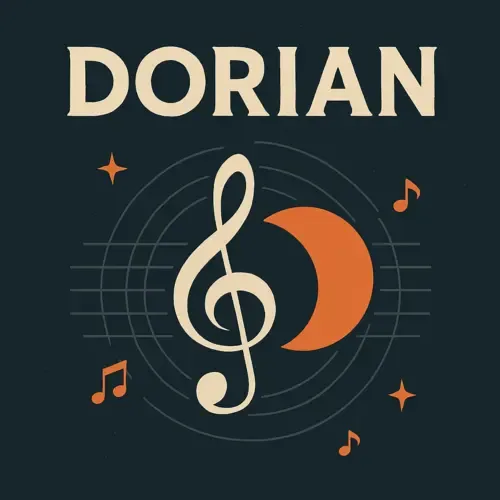
Dorian
Light and darkness in perfect balance. Read article.
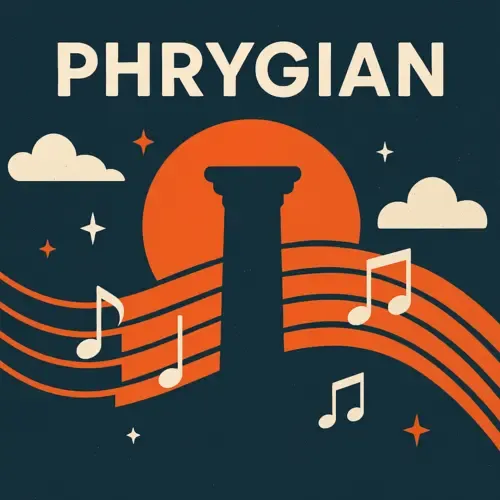
Phrygian
A mysterious and ancient sound. Read article.
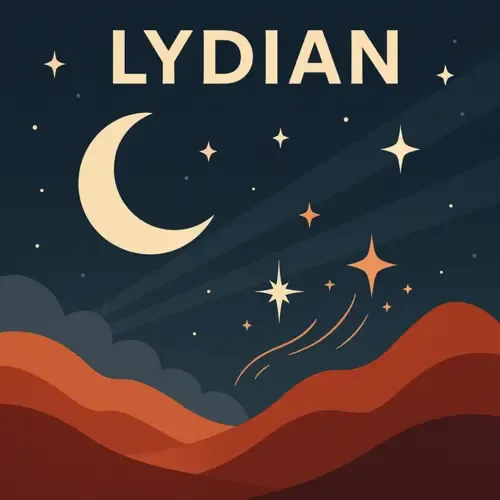
Lydian
Ethereal sparks of a dream land. Read article.
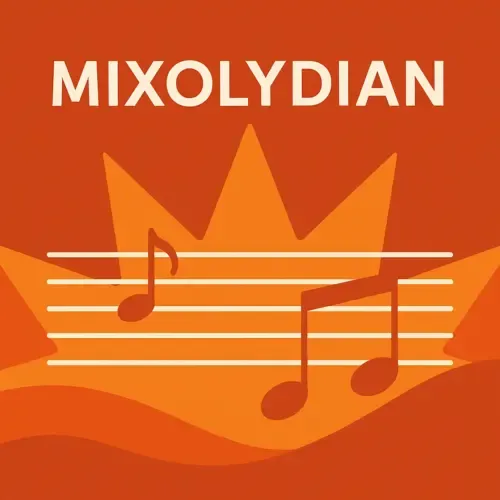
Mixolydian
Upbeat, cheerful and groovy. Read article.

Aeolian
Melancholy on a rainy day. Read article.
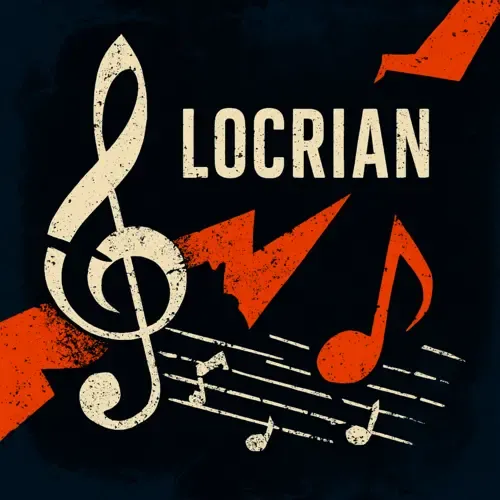
Locrian
Unsettling and edgy vibes. Read article.








